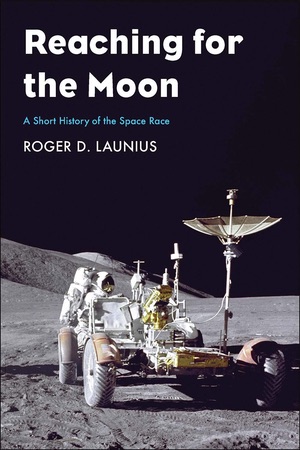Review: Reaching for the Moonby Jeff Foust
|
| Was Kennedy’s decision to go to the Moon a “rational, pragmatic choice,” or did his background lead him to choose “a more combative approach towards the Soviet Union than required”? |
Reaching for the Moon follows a chronological approach to the history of the Space Race, starting with the pre-history of efforts in the United States and Soviet Union to launch the first satellites and going through the Apollo missions to the Moon. In chapters in between, he touches on topics ranging from the selection of the Mercury 7 astronauts, Kennedy’s decision to go to the Moon, and the development of the Apollo spacecraft and Saturn V rocket, along with the ultimately unsuccessful Soviet efforts to send men to the Moon.
The book, though, is not just a straightforward history of the Space Race. Launius analyzes many aspects of that effort, like Kennedy’s decision to make a human lunar landing the goal for the nation’s space efforts in the spring of 1961. Was it a “rational, pragmatic choice” as the best way the US could compete with the USSR given the Soviets’ early successes, as many have argued? Or, perhaps, “Kennedy’s tortured background and aggressive tendencies affected his decision making, causing him to take a more combative approach towards the Soviet Union than required.” In any case, Launius argues, the “illusion of the ‘golden age’ of Apollo has been difficult to overcome, and moving beyond the Apollo program to embrace future opportunities has been equally difficult.”
There is some overlap in the material in Reaching for the Moon with Apollo’s Legacy, such as in some of the analyses of Apollo, but the two books are distinct texts that serve different, but related, purposes. This book is particularly well suited for those who have only modest knowledge about the Space Race but want to learn more, and put that knowledge in a critical context versus simply memorizing names and launch dates. “The symbolism of the space race has held special appeal for the true believers of space exploration,” he writes in the book’s conclusion, arguing that those people believed space deserved “special consideration” that has, in large part, been lacking in the last half-century. “There is,” he concludes, “no second space race in the foreseeable future.”
Note: we are temporarily moderating all comments subcommitted to deal with a surge in spam.
